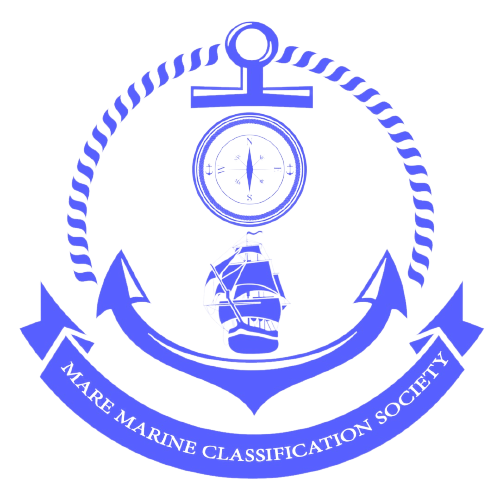CLASSIFICATION OF EXISTING VESSEL
1.General
1.1. When an Owner applies to the Society for a ship already in service to be admitted to class, the application will be processed differently depending on whether the ship is:
- classed with an MMCS Society.
- built under an MMCS Society but presently not with an MMCS Society.
- not classed with an MMCS Society.
2. Ships classed with an MMCS Society
2.1. In this case, ships will be admitted to the Society’s class upon satisfactory surveys and verification of documentation.
For the extent and scope of the surveys to be carried out and the list of documentation to be submitted by the Interested Party, reference is to be made to 2.2 and 2.3.
Note 1: For transfer of class at ship’s delivery, specific procedures apply.
2.2. Surveys to be carried out are based on the age of the ship and the updated current class status as provided by the previous MMCS Member Society. The extent of these surveys is to be at least the following.
a)Surveys of hull, ships without notation ESP (Enhanced Survey Program):
- for ships of age less than 5 years, the survey is to have the scope of an annual survey
- for ships which are 5 years of age and above but less than 10 years of age, in addition, the survey is to include the inspection of a representative number of ballast spaces
- for ships which are 10 years of age and above but less than 20 years of age, in addition, the survey is to include the inspection of a representative number of cargo holds and/or cargo tanks, as applicable
- for ships which are 20 years of age and above, a class renewal survey is to be carried out (this requirement is also applicable to ships having their hull under continuous survey)
- in the latter case, if a bottom survey in dry condition is not due at the time of transfer, consideration can be given to carrying out a bottom in-water survey in lieu of bottom survey in dry condition.
b)Surveys of hull, ships with notation ESP:
- for ships of age less than 5 years, the survey is to have the scope of an annual survey
- for ships between 5 and 10 years of age, in addition, the survey is to include the inspection of a representative number of ballast spaces
- for ships which are 10 years of age and above but less than 15 years of age, in addition, the survey is to include the inspection of a representative number of cargo holds and/or cargo tanks, as applicable
- for ships which are 15 years of age and above, but less than 20 years of age, the survey is to have the scope of a class renewal survey or of an intermediate survey, whichever is due next
- for ships which are 20 years of age and above, the survey is to have the scope of a class renewal survey
- in the two latter cases, if a bottom survey in dry condition is not due at the time of transfer, consideration can be given to carrying out a bottom in-water survey in lieu of bottom survey in dry condition.
c)Survey of machinery. A general examination of all essential machinery is to be held including at least the following:
- Examination under working condition of oil fuel burning equipment, boilers, economizers and steam/steam generators. The adjustment of safety valves of this equipment is to be verified by checking the records on board ship
- All pressure vessels are to be examined
- Insulation resistance, generator circuit breakers, preference tripping relays and generator prime mover governors are to be tested and paralleling and load sharing to be proved
- In all cases, navigating lights and indicators are to be examined and their working and alternative sources of power verified
- Bilge pumps, emergency fire pumps and remote controls for oil valves, oil fuel pumps, lubricating oil pumps and forced draught fans are to be examined under working condition
- Recirculating and ice clearing arrangements, if any
- The main and all auxiliary machinery necessary for operation of the ship at sea together with essential controls and steering gear is to be tested under working conditions. Alternative means of steering are to be tested
- A short sea trial is to be held, at the Surveyor’s discretion, if the ship has been laid up for a long period
- Initial start arrangements are to be verified
- In the case of oil tankers, the cargo oil system and electrical installations in way of hazardous spaces are to be checked for compliance with rule requirements.
Where intrinsically safe equipment is installed, the Surveyors are to satisfy themselves that such equipment has been approved by a recognized authority. The safety devices, alarms and essential instruments of the inert gas system are to be verified and the plant generally examined to ensure that it does not constitute a hazard to the ship.
2.3. Documentation
As a rule, the documentation to be supplied is the following.
a)Main plans:
- General arrangement
- Capacity plan
- Hydrostatic curves
- Loading manual, where required
- Stability documents, if applicable.
b)Hull structure plans:
- Midship section
- Scantling plan
- Profile and Deck plans
- Shell expansion
- Watertight bulkheads
- Rudder and rudder stock
- Hatch covers.
c)Machinery plans:
- Machinery arrangement
- Intermediate, thrust and screw shafts
- Propeller
- Main engines, propulsion gears and clutch systems (or Manufacturer’s make,model and rating information)
- For steam turbine ships, main boilers, superheaters and economisers (or Manufacturer’s make, model and rating information) and steam piping
- Diagram of fuel, bilge, ballast, lubricating oil, cooling, ballast, steam and starting compressed air piping systems
- Drawings of boilers and air receivers
- Steering gear system piping and arrangements
- Torsion vibration calculations, for ships less than two years old
- Plans for flexible couplings and/or torque limiting shafting devices in the propulsion line shafting (or Manufacturer’s make, model and rating information), for ships assigned with one of the ice class additional class notations
- Pumping arrangements at the forward and after ends, drainage of cofferdams and pump rooms and general arrangements of cargo piping in tanks and on decks, for oil tankers.
d)Electric installation plans:
- Master plan of power distribution, lighting and emergency power circuits
- Single line diagram of networks and switchboards
- Location and arrangement of electrical equipment in hazardous areas.
e)Plans required for ships assigned one of the additional class notations for Automated Machinery Systems:
- Instrument list
- Fire alarm system
- Plans for systematic maintenance and functioning tests.
Documents concerning exemptions issued by the previous flag / administration should be submitted for review and verification of compliance with the requirements of the new flag.
Alternative technical data may be accepted by the Society in lieu of specific items of the listed documentation not available at the time of the transfer of class.
For installations or equipment covered by additional service and/or class notations, the Society will determine the documentation to be submitted.
In addition, the Society may base its judgment upon documentation such as certificates issued or accepted by the former Classification Society, if any, and statutory certificates issued by the flag Administration or by a recognized organization on its behalf; moreover, other documents and/or plans may be specifically required to be supplied to the Society in individual cases.
2.4. For ships of less than 100 gross tonnage, special consideration will be given to the scope of surveys and documentation to be supplied.
3. Ships built under an MMCS Society but presently not with an MMCS Society.
3.1. In this case, the class of the ship will be assigned upon a verification of the documentation listed in 2.3 and subsequent satisfactory completion of the surveys, the extent and scope of which are given below.
3.2. Surveys
The extent and scope of the admission to class survey are to be not less than those required at the class renewal survey of a ship of the same age and type; in addition all other periodical surveys should be performed together with those inspections which are linked to specific service notations and/or additional class notations and/or special installations the ship is provided with.
3.3. Special consideration will be given to ships of recent construction.
4. Ships not classed with an MMCS Society.
4.1. In this case, the class of the ship will be assigned upon a preliminary review of the documentation listed in 2.3 and subsequent satisfactory completion of the surveys, the extent and scope of which are given in 3.2.
4.2. Special consideration will be given to ships of recent construction.


